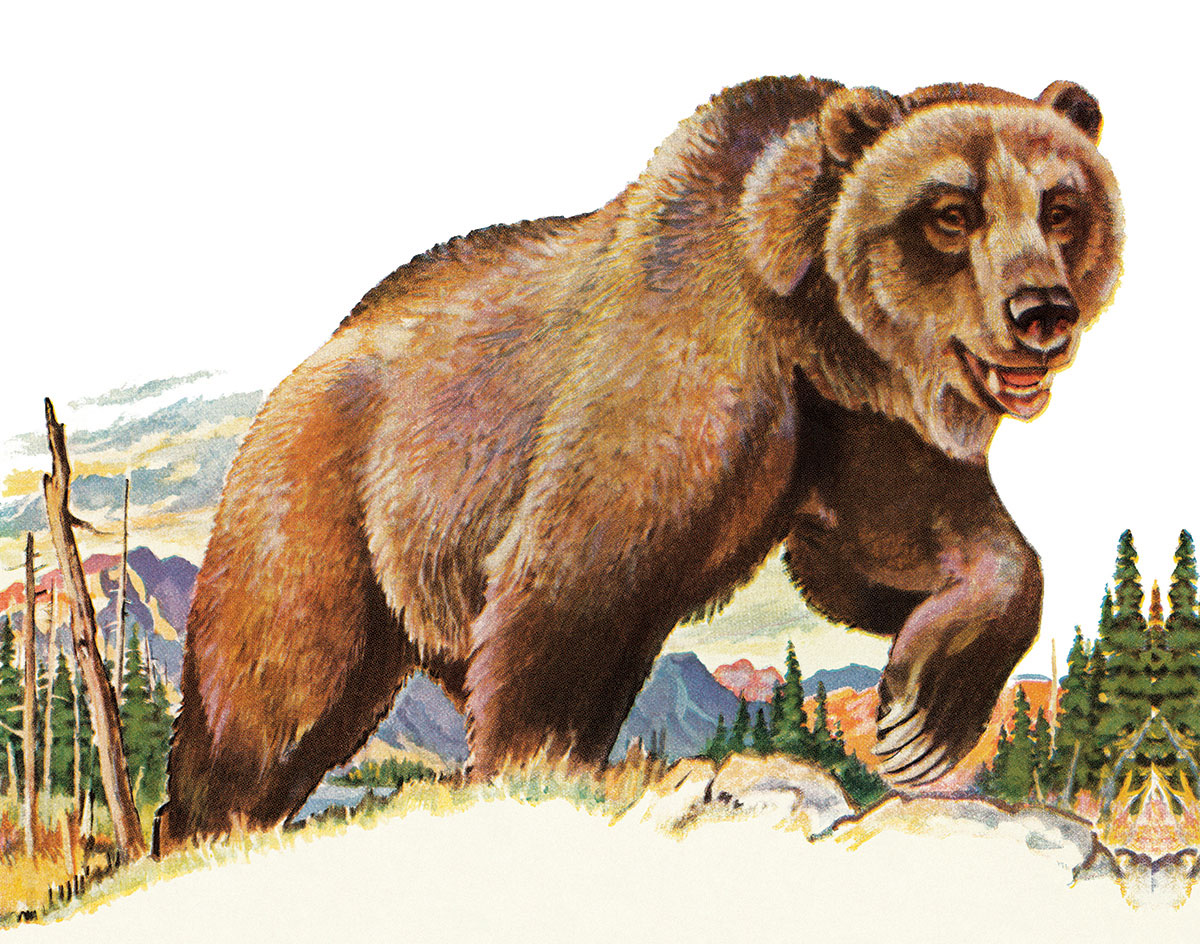
All of these awesome experiences confirm what federal, state, and tribal biologists have known for years—the Yellowstone grizzly bear has made a remarkable comeback since being listed under the Endangered Species Act in 1975. Once down to 136 bears, the grizzly population now exceeds 700, 200 more than what federal biologists consider the minimum population size needed to preserve the species. Many biologists involved in the species’ recovery believe the population is closer to 1,000, if not higher.
Either way, the Yellowstone grizzly is thriving. “The Greater Yellowstone Ecosystem has reached its carrying capacity for bears,” according to Dan Ashe, the former Fish and Wildlife Service director under President Obama—so much so, Ashe says, that the ecosystem is now “exporting bears.” Grizzlies are venturing farther into human-dominated landscapes that are less suitable for the bear. Verified grizzly conflicts in Wyoming are at levels not seen in decades, up from an average of 80 annually in the 1990s to 220 annually in the past eight years.
The recovery of the Yellowstone grizzly is not a partisan issue. The latest grizzly delisting process was started by the Obama administration and completed by the Trump administration in 2017. The affected states—Montana, Wyoming, and Idaho, which are governed by a Democrat and two Republicans—all concurred with the decision to delist the bear. As did the Interagency Grizzly Bear Study Committee, which was formed in 1983 to help recover the bear and is made up of the key federal, state, and tribal wildlife managers in the region.
“If people feel that no matter what they do, nothing’s ever going to change, then they won’t invest time in helping with recovery.”
But to this day, the Yellowstone grizzly remains listed under the Endangered Species Act. Last September, in response to plans by Wyoming and Idaho to go forward with a limited grizzly hunt, a federal district judge put the bear back on the threatened species list. The judge called the decision to delist “arbitrary and capricious,” marking the second time in a decade that a federal judge has relisted the Yellowstone grizzly. That decision is now on appeal in the Ninth Circuit.
In May, PERC and the Pacific Legal Foundation filed an amicus brief in the case in which we argued that failure to delist the Yellowstone population threatens “not only the continued conservation of the Greater Yellowstone Ecosystem grizzly but also the recovery and conservation of other imperiled species.” That’s because keeping a species on the endangered list after it’s recovered precludes a return to state management, which would reduce regulatory burdens for landowners. The end result is to undermine many of the incentives for recovery.
Yet even if the bear is ultimately delisted, a new bill introduced in Congress could present obstacles to further recovery efforts. The bill proposes to treat the grizzly as if it will effectively remain endangered in perpetuity, essentially stripping states of their management authority and extending permanent federal control over the bear. At a hearing before the U.S. House Natural Resources Committee in May, PERC research fellow Jonathan Wood testified that by requiring unending federal management, the bill “would eliminate a key incentive for collaborative efforts to recovery grizzly populations.”
The recent judicial relisting and proposed congressional action have as much to do with the grizzly bear as they do with the integrity of the Endangered Species Act. While more than 1,600 domestic species are currently listed, only three dozen species have ever been recovered under the act. Ninety-nine percent of the species listed have been saved from extinction, yet less than 2 percent of listed species have recovered. The grizzly bear was poised to be an Endangered Species Act success story.
The implications make species recovery a challenge. Long-standing recovery goals established by biologists get disregarded. Support from landowners and states, who shoulder most of the financial burden of recovery efforts, are in danger of washing away in a stream of discouragement. In the case of the grizzly, the bears have comfortably exceeded their official recovery criteria for 16 years straight.
Other species will also be affected. Resources will be diverted from those truly in need. And the signal will be that certain species will always remain on the list—that science and biology can easily be displaced by judicial environmentalism. All of these are conservation incentive-busters.
As Chris Servheen, former grizzly bear recovery coordinator for the federal government, recently told NPR: “The future of grizzly bears is in the hands of the people who live, work and recreate in bear habitat. And if those people feel that no matter what they do, nothing’s ever going to change, nothing’s ever good enough, then they won’t invest time in helping with recovery.”
The Endangered Species Act was not created to keep species under federal control forever. The goal is to recover threatened and endangered species to a point that management can be turned over to the states. There is even a transitional five-year period of federal oversight to ensure the recovered species carries on.
Under the North American Model of Wildlife Conservation, states are already the lead manager for the vast majority of our nation’s wildlife, including wolves, mountain lions, black bears, bighorn sheep, elk, pronghorn, and moose. The three states that would manage the grizzly have entered into an agreement that would keep populations well above the recovery goal. No state wants to see the grizzly return to the endangered species list. In fact, no species taken off the endangered species list has ever returned to the list as a result of state management. As sportsman-naturalist Steven Rinella notes, it’s wrong to suggest “states are like teenagers waiting to rebel once their parents leave home.”
The beauty of state management for a recovered animal is “conservation federalism.” Each state has the ability to experiment to see what works best for its bear populations and stakeholders, especially working landowners who deal firsthand with the cost of recovery. Experimentation for a recovered species should be encouraged, including creative but responsible connectivity of different grizzly bear populations.
As for hunting, even the Montana Wildlife Federation has recognized that tightly regulated hunting is a part of sound wildlife management and that the grizzly should be no exception. Species valued by hunters thrive under the North American Model. In Montana, with hunting allowed, the state manages wolves at five times the federal recovery population goal.
Yet I have no interest in hunting a grizzly bear. The spotting scope is my preferred weapon of capture for this incredible animal. I agree with Enos Mills, the famed naturalist from the turn of the 20th century, when he said, “The imagination will be alive so long as the grizzly lives.” A walk in the woods in grizzly country is no casual matter—every snap of a twig or moving shadow provides for a more meaningful experience in nature, a vivid reminder that I am a guest in another’s home.
That’s why it’s important to graduate the grizzly as a “here to stay” beneficiary of the Endangered Species Act, lest we lose support for the bear, or any other species in need of recovery. We should give the North American Wildlife Model of Conservation an opportunity to work in the case of the Yellowstone grizzly bear.



